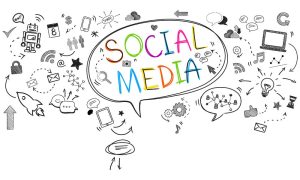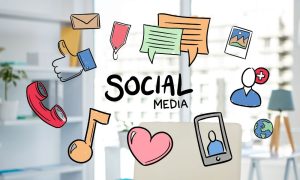Brand awareness isn’t just about people recognizing your logo or remembering your company name. It’s about being part of their thoughts when they need what you offer. And today, that kind of familiarity is often built on social media.
But building awareness through social media is more than posting now and then. It’s about understanding how social platforms work, what kind of content people notice, and how conversations turn into recognition. In this article, we’ll explore exactly how social media helps grow brand awareness, what the opportunities are and what risks to watch for..
We’ll also look at what successful brands are doing, and how you can apply similar ideas to your own strategy, whether you’re just starting or looking to improve what you’re already doing.

The Strategic Value of Social Media in Building Awareness
What makes social media such an effective tool for brand awareness is its ability to reach people where they’re already active, without requiring a huge budget. Unlike traditional channels that often demand large upfront costs, social media allows brands to start small, test ideas, and grow their presence over time. A single post, shared at the right moment, can reach thousands without spending a cent. And when you do put budget behind content, you have more control over who sees it and how it performs.
Another strength lies in platform variety. Each social network serves a slightly different audience and purpose. Instagram is visual and lifestyle-focused, making it ideal for showing off products or behind-the-scenes stories. TikTok leans into trends, quick ideas, and creativity, helping brands go viral when the tone is right. LinkedIn creates space for professional credibility and industry leadership, especially for B2B brands. This range gives you room to tailor your message without needing to reinvent it for every platform.
But reach alone isn’t enough. What really sets social media apart is how it builds trust. People follow creators and brands they relate to. They interact with posts that feel personal, not promotional. Compared to ads on TV or billboards, social content has a more human feel. When a brand shows up in someone’s feed, not just as an ad but as part of the conversation, it starts to feel more familiar and reliable.
This mix of visibility, variety, and relatability makes social media a unique space for building brand awareness, and one that continues to grow in influence.
Key Mechanics: How Social Media Boosts Brand Awareness
Now that we’ve covered why social media is such a valuable space for building awareness, it’s time to look at how it actually works. There are a few core mechanisms that make it so effective, each one adding a layer to how people discover, remember, and trust a brand.
1. Audience Reach & Engagement
At its core, social media is a distribution channel. Every post, story, or video has the potential to reach far beyond your current audience. If something resonates, it gets shared, commented on, or picked up by the algorithm, and suddenly your brand is in front of new eyes. But it’s not just about reach. Engagement is what makes that reach meaningful.
When someone likes, comments, or shares a post, they’re not just seeing your brand, they’re interacting with it. That interaction builds a small but important connection, one that adds up over time.
2. Influencer Marketing
Once you understand the value of engagement, it becomes clear why influencers are so powerful. They’ve already earned credibility with a specific audience, and when they talk about a brand, it often feels more genuine than a direct ad. The key here isn’t just working with the biggest names.
In many cases, smaller creators with focused communities can drive stronger awareness because their followers feel a closer connection. Influencer marketing essentially adds a familiar face to your brand, which helps it stick.
💡You can also use influencer discovery tools to find creators whose audience and content align with your brand goals.
3. User‑Generated Content (UGC)
Building on that idea of trust, UGC takes it a step further. When real customers share their own experiences, whether it’s an unboxing video, a quick review, or a photo of your product in use, it sends a strong message to others. It says, “This brand is part of my life.”
That kind of social proof often carries more authenticity than a branded message. Encouraging and resharing UGC helps you stay visible and relatable, while showing that real people actually enjoy what you offer.
4. Paid Advertising & Targeting Capabilities
Of course, organic content has its limits, especially when algorithms change. That’s where paid social comes in. What makes social media advertising different from traditional ads is how precise it can be. You can target by age, interests, behavior, location, or even past interactions with your brand.
This means you’re not just reaching people, you’re reaching the right people, with the right message, at the right time. And when paid content is combined with organic efforts, it strengthens your overall visibility.
5. Social Listening & Analytics
Finally, awareness isn’t just about putting content out there. It’s also about paying attention to what’s being said in return. Social listening helps you track mentions, hashtags, and conversations that involve your brand, even when you’re not tagged directly.
It gives you insight into how people perceive your brand, what they associate it with, and how often it comes up in relevant discussions. Combined with analytics tools, this feedback loop helps you fine-tune your strategy and stay aware of how your brand is performing in real time.
Each of these mechanics supports the others. Together, they create a full picture of how a brand can grow its presence, stay connected to its audience, and build lasting recognition through social media.

The Challenges & Risks of Using Social Media for Brand Awareness
While social media offers clear advantages for growing brand awareness, it also comes with its own set of risks. These platforms move quickly, and what helps your visibility one week could work against you the next. To get the most out of social media, it’s important to recognize the challenges that can limit or even harm your brand presence and prepare for them early on.
1. Risk of Negative Publicity (Cancel Culture, PR Crises)
Social media allows people to react in real time, which is both a strength and a vulnerability. A single post, comment, or customer experience can spread fast, especially if it sparks controversy or criticism. Whether it’s a poorly worded caption, an outdated campaign, or a larger issue tied to brand values, backlash can build quickly.
Public pressure can damage brand perception, and how a company responds in those moments often matters more than the original mistake. Managing risk means not only monitoring content but also having clear values and a plan in place when things go wrong.
2. Algorithm Changes Affecting Organic Reach
Even when everything is going right content-wise, platform algorithms can suddenly shift how your posts are shown, or whether they’re shown at all. A drop in reach might not reflect the quality of your content, but rather a change in how the platform favors certain types of posts.
These updates are often outside your control, which is why relying only on organic growth can be unpredictable. Staying informed and diversifying your strategy, including a mix of formats, platforms, and paid content, helps reduce the risk of becoming invisible overnight.
3. Oversaturation & Competitive Noise
The more brands use social media, the more crowded the space becomes. Feeds are full of ads, promotions, branded content, and creator collaborations. This makes it harder to stand out, especially if you’re saying the same things others are saying. Repetitive or overly promotional content can cause fatigue, leading people to scroll past without really seeing what you’ve shared.
To cut through the noise, brands need more than frequent posts. They need a clear point of view, a consistent voice, and content that offers real value, whether that’s information, entertainment, or simply something relatable. Attention is limited, and the brands that win it are usually the ones that understand how to keep it simple, relevant, and timely.
Actionable Strategies & Best Practices
The most effective social media strategies aren’t built on chasing the latest trends. They come from a steady, well-planned approach that fits your brand’s identity and speaks directly to your audience. The following best practices focus on clarity, consistency, and genuine interaction, all key ingredients for building long-term awareness and recognition.
1. Develop a Clear Content Strategy
Everything starts with a plan. Without one, it’s easy to fall into the trap of posting just to stay active, without a real goal. A strong content strategy helps you stay focused on what matters, building recognition and trust.
That means finding the right balance between different types of content: organic posts that speak directly to your audience, collaborations with influencers that extend your reach, and UGC that adds a layer of social proof. It’s also important to make sure all content reflects a consistent voice, tone, and message. That’s what helps people remember you.
💡If working with creators is part of your plan, an influencer hiring platform can simplify finding and managing campaigns.
2. Target Smart & Track Metrics
Knowing what to say is important, but knowing who you’re speaking to is just as critical. Each platform gives you tools to narrow down your audience based on location, interests, behavior, and more. This helps ensure your content reaches the people most likely to care. From there, tracking key metrics gives you insight into how your brand is performing.
Look beyond likes and views. Focus on indicators like engagement rate, sentiment, share of voice, and how often people move from social platforms to your website or store. These metrics help you connect visibility to real outcomes.
3. Lean into Authentic Influencer & UGC Campaigns
With your targeting and tracking in place, influencer and UGC campaigns become even more effective. These types of content work best when they feel genuine, not overly produced or scripted. Choose creators who already align with your values and audience. Let them bring your product into their world in a way that feels natural.
At the same time, invite your customers to share their own stories. Whether it’s through a hashtag, a repost, or a simple “tag us,” encouraging real voices adds authenticity that can’t be faked.
💡Tools that streamline your influencer outreach can help you connect with the right creators faster and keep your communication organized.
4. Promote Two‑Way Engagement
The more your audience feels heard, the more connected they become. Don’t treat social media as a one-way channel. Ask questions, respond to comments, and join conversations. Even a short reply can go a long way toward building trust.
This kind of interaction not only strengthens relationships but also boosts visibility, since most algorithms reward engagement. People are more likely to remember your brand if they’ve had a direct and positive interaction with it.
5. Conduct A/B Testing & Optimize
Not everything will work the first time, and that’s okay. Testing different formats, captions, visuals, and posting times gives you insight into what actually resonates with your audience. Maybe videos outperform images, or maybe carousel posts hold attention longer. Start with small experiments and use the results to guide your content going forward. Over time, these small changes lead to a more effective and efficient strategy.
6. Combine Metrics & Qualitative Feedback
Finally, numbers only tell part of the story. Social media analytics give you volume and performance data, but qualitative feedback helps you understand how your brand is perceived. Listen to what people are saying in comments, DMs, and reviews. Use surveys or polls to ask directly what they think. This mix of data and real feedback gives you a more complete picture of your brand’s visibility, and how to improve it.
With the right strategy in place, your efforts on social media become more than just posts, they become a reliable system for growing awareness, building trust, and staying connected to your audience.

Final Thoughts on the Impact of Social Media on Brand Awareness
Brand awareness doesn’t happen overnight, and on social media, it’s rarely the result of just one post or campaign. It’s built gradually, through consistent content, real conversations, and a clear understanding of your audience.
We’ve looked at how social media helps brands grow their presence, from reaching new people to earning trust through influencers and user-generated content. We also covered the risks that come with visibility, from algorithm shifts to public feedback, and how a solid strategy can help you stay ahead of those challenges.
The key is to focus on what makes your brand worth remembering. When your content reflects that clearly and consistently, awareness becomes more than a metric, it becomes a lasting connection between you and the people you’re trying to reach.
💡If you’re looking for more hands-on help, influencer marketing agency support can take care of both strategy and execution.



